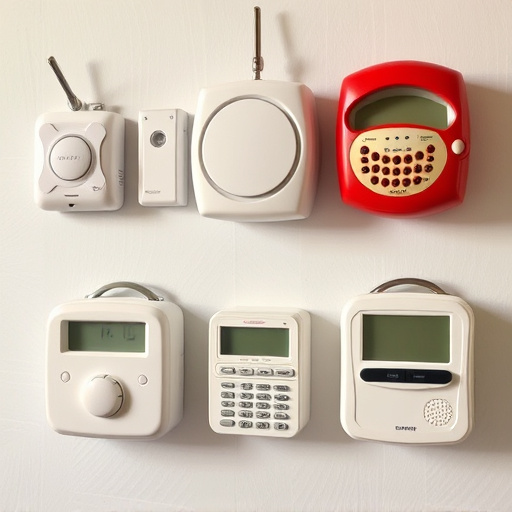Panic alarms in wearable security systems are indispensable tools for personal safety, featuring a powerful Panic Alarm Sound that can attract attention up to 50 meters away. Optimizing carry distance is crucial, using high-quality speakers and directional sound projection to maximize alertness and accessibility during emergencies or unfamiliar areas. Technological advancements, including sophisticated sound engineering and improved RF technology, enhance safety and peace of mind for users, ensuring discrete yet effective protection in crowded areas or outdoor activities.
In today’s world, personal security is paramount. Discrete wearable security alarm systems offer a revolutionary approach to self-protection, integrating essential features for immediate attention in case of danger. This article delves into the intricate details of panic alarms, highlighting their sound functionality, carry distance optimization, and advanced technological advancements. Understanding these key aspects ensures individuals can leverage the full potential of these life-saving devices, promoting peace of mind and enhanced alertness.
- Understanding Panic Alarms: Essential Features and Functionality
- The Role of Sound in Wearable Security Alarm Systems
- Optimizing Carry Distance: Ensuring Alertness and Accessibility
- Advanced Technologies Enhancing Discrete Wearable Alarms
Understanding Panic Alarms: Essential Features and Functionality
Panic alarms are a critical component of personal safety, designed to signal distress quickly and discreetly. These wearable devices emit a distinct sound that can attract attention and alert bystanders or emergency services when activated. The Panic Alarm Sound is typically loud and high-pitched, ensuring it stands out above ambient noise. This feature is crucial for drawing immediate help during an emergency.
Functionality extends beyond the sound itself. The carry distance of a panic alarm is an essential specification, indicating how far the signal can travel. Advanced models offer a range of up to 50 meters, allowing users to trigger assistance even when in remote or noisy environments. This feature enhances personal security, especially during solo activities or in areas with potential risks.
The Role of Sound in Wearable Security Alarm Systems
In wearable security alarm systems, sound plays a pivotal role in ensuring user safety and quick response during emergencies. When activated, these devices emit a distinct Panic Alarm Sound designed to capture attention and alert others nearby. The effectiveness of this audio signal extends beyond its loudness; it also considers the carry distance. A well-designed panic alarm should be audible not just to the wearer but also to individuals in the immediate vicinity, ensuring that help can arrive promptly.
The specific frequency and duration of the Panic Alarm Sound are crucial factors. Higher frequencies can cut through ambient noise, making the alert harder to ignore. Moreover, a well-timed and short burst of sound conserves battery life while maintaining efficacy. This is particularly important for discrete wearables designed for everyday use, where users expect long battery life without frequent recharging.
Optimizing Carry Distance: Ensuring Alertness and Accessibility
In the context of discrete wearable security alarm systems, optimizing carry distance is paramount to ensure both alertness and accessibility. A key feature to consider is the range at which the panic alarm sound can be heard and activated. Systems designed for optimal carry distance offer clear, loud signals that can be detected from a reasonable distance, allowing users to summon help or deter potential threats promptly. This functionality is especially valuable in scenarios where immediate assistance is required, such as during emergencies or when navigating unfamiliar areas.
The design and placement of the wearable device play a crucial role in maximizing carry distance. Advanced systems employ high-quality speakers and precise directional sound projection to ensure that the panic alarm sound reaches intended listeners without unnecessary amplification. This not only conserves battery life but also maintains discretion, making the system more suitable for everyday use. By focusing on these technical aspects, manufacturers can deliver wearables that offer enhanced safety features while remaining practical and user-friendly.
Advanced Technologies Enhancing Discrete Wearable Alarms
The evolution of discrete wearable security alarm systems has been driven by advancements in technology, offering users enhanced safety and peace of mind. One key aspect is the integration of more sophisticated sound engineering. Modern wearable alarms produce not just a standard beep but intricate Panic Alarm Sounds designed to grab attention and alert others nearby. This is particularly beneficial in crowded areas where a distinct audio signal can help ensure help arrives swiftly.
Additionally, advancements have been made in terms of the Carry Distance these devices can effectively transmit signals. Improved radio frequency (RF) technology allows for longer ranges, ensuring users remain protected even when separated from their primary alarm source. This feature is invaluable for situations where someone may need assistance away from their home or workplace, providing an extra layer of security and accessibility during travel or outdoor activities.
Discrete wearable security alarm systems, incorporating advanced technologies, offer a unique blend of portability and protection. By understanding essential features like panic alarm sound and optimizing carry distance, users can ensure alertness and accessibility in various situations. These innovations not only enhance personal safety but also provide peace of mind, making them invaluable tools for everyday life.
